We my use cropdetect filter as described in the following post.
Within Python we may execute FFmpeg as subprocess twice - first time with cropdetect filter for finding the black borders, and second time for cropping the borders.
The output of cropdetect filter is as a lines of text, that should be parsed:
#[Parsed_cropdetect_0 @ 00000232c2705e00] x1:69 x2:551 y1:0 y2:309 w:480 h:304 x:72 y:4 pts:512 t:0.040000 crop=480:304:72:4
#[Parsed_cropdetect_0 @ 00000232c2705e00] x1:69 x2:551 y1:0 y2:309 w:480 h:304 x:72 y:4 pts:1024 t:0.080000 crop=480:304:72:4
...
Suggested stages:
Execute FFmpeg as subprocess with cropdetect filter, and storing the (stderr) output in cropdetect_output string:
cropdetect_output = sp.run(['ffmpeg', '-hide_banner', '-i', in_video_file, '-vf', 'cropdetect=skip=0', '-t', '1', '-f', 'null', 'pipe:'], stderr=sp.PIPE, universal_newlines=True).stderr
Find the substring, that starts with "crop=" and ends by new line using re.search regular expression searching:
crop_str = re.search('crop=.*', cropdetect_output).group(0) # crop=480:304:72:4
Execute FFmpeg using crop filter with the crop= arguments found above.
sp.run(['ffmpeg', '-hide_banner', '-i', in_video_file, '-vf', crop_str+',setsar=1', out_video_file])
Code sample:
import subprocess as sp
import re
in_video_file = 'wnkaa.mp4'
out_video_file = 'cropped_wnkaa.mp4'
# ffmpeg -hide_banner -i wnkaa.mp4 -vf cropdetect=skip=0 -t 1 -f null
cropdetect_output = sp.run(['ffmpeg', '-hide_banner', '-i', in_video_file, '-vf', 'cropdetect=skip=0', '-t', '1', '-f', 'null', 'pipe:'], stderr=sp.PIPE, universal_newlines=True).stderr
# Return: crop=480:304:72:4
crop_str = re.search('crop=.*', cropdetect_output).group(0) # Find the first match of "crop=", and return all characters from "crop=" up to new line.
# ffmpeg -hide_banner -i wnkaa.mp4 -vf crop=480:304:72:4,setsar=1 cropped_wnkaa.mp4
sp.run(['ffmpeg', '-hide_banner', '-i', in_video_file, '-vf', crop_str+',setsar=1', out_video_file])
Note:
The above command uses default codec arguments (it's just an example).
We may add encoding arguments like '-vcodec', 'libx264', '-crf', '20', '-pix_fmt', 'yuv420p'...
Sample output frame:


